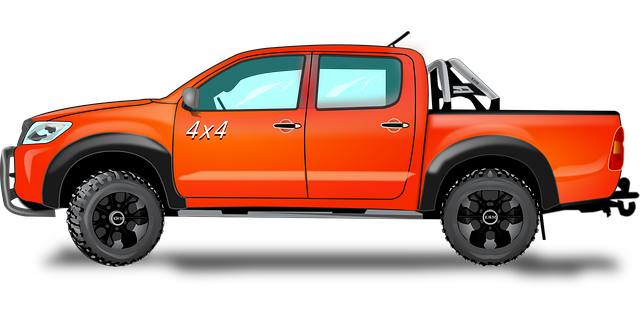Rotors, vital for fleet truck repair in Brownsville, TX, are discussed in detail, highlighting their role in braking systems, types (solid, vented, floating), common issues (warping, corrosion), and importance in maintenance. A fleet truck repair manual in Brownsville provides guidance on diagnosing and addressing rotor problems, emphasizing regular inspections, lubrication, and replacement based on vehicle specifications to ensure safety and efficiency of fleet trucks.
“In the realm of fleet truck maintenance, understanding rotors is paramount for professionals in Brownsville, TX. This comprehensive guide delves into the intricacies of rotors, their basic functions, and diverse types. We explore common issues plaguing fleet trucks, offering a step-by-step diagnosis process.
Learn about the critical role of regular maintenance in extending rotor lifespan and discover best practices for installation and replacement. Additionally, we provide preventative measures to ensure optimal performance, catering to your needs in the bustling landscape of Brownsville’s fleet truck repair industry.”
- Understanding Rotors: Basic Function and Types
- Common Rotor Issues in Fleet Truck Repair
- Diagnosing Rotor Problems: A Step-by-Step Guide
- The Role of Maintenance in Rotor Longevity
- Choosing the Right Replacement Rotors
- Best Practices for Installing New Rotors
Understanding Rotors: Basic Function and Types

Rotors are a fundamental component in many mechanical systems, particularly in vehicles, where they play a crucial role in various functions. In the context of fleet truck repair manual Brownsville Tx, understanding rotors is essential for technicians and fleet managers alike. These rotating discs serve as part of the braking system, converting kinetic energy into heat through friction with brake pads or shoes when activated.
There are several types of rotors, each designed for specific applications. Solid rotors, commonly found in passenger cars, consist of a single piece of metal, offering even heat distribution and consistent performance. In contrast, vented rotors have cooling slots, enhancing heat dissipation, making them popular for high-performance vehicles and trucks. Floating rotors, another variation, are separate from the hub and allowed to rotate freely, reducing thermal expansion issues and improving brake effectiveness. This knowledge is vital for technicians when diagnosing and repairing braking systems in Brownsville’s fleet of commercial trucks, ensuring safe and efficient operations.
Common Rotor Issues in Fleet Truck Repair

In fleet truck repair, rotors are a common point of concern due to the high-wear environments in which these vehicles operate. One of the most frequent issues is rotor warping, caused by uneven braking force or excessive heat, leading to a distorted shape and reduced surface area contact with the brake pads. This not only compromises braking efficiency but also increases the risk of accidents. Another prevalent problem is corrosion, particularly in areas with high humidity, which can cause rust buildup and lead to rotor failure if left unaddressed.
A fleet truck repair manual in Brownsville, Tx, often includes detailed sections on rotor maintenance and replacement due to these common issues. Regular inspection for signs of wear, corrosion, or warping is crucial. Proper lubrication and ensuring the vehicle’s braking system is well-maintained can significantly extend the lifespan of rotors. Quick identification and resolution of these problems are key to minimizing downtime and maintaining the safety and efficiency of fleet trucks.
Diagnosing Rotor Problems: A Step-by-Step Guide

Diagnosing rotor problems is a crucial step in maintaining the performance and safety of your fleet trucks, especially in the high-traffic areas where regular repairs are essential. Here’s a straightforward guide tailored for truck repair manuals in Brownsville, TX.
Start by inspecting the rotors visually for any signs of damage, such as cracks, warping, or excessive wear. These symptoms often indicate issues that require immediate attention. Next, use a feeler gauge to measure the thickness of the rotor. A consistent thickness across both sides is ideal; deviations could point to problems like heat-related distortion. Vibration tests are also vital; excessive vibration may suggest misalignment or damaged components within the brake system. If concerns arise from these checks, refer to your fleet truck repair manual for detailed troubleshooting steps specific to your vehicle’s make and model.
The Role of Maintenance in Rotor Longevity

The role of maintenance cannot be overstated when it comes to ensuring the longevity of rotors, especially in the demanding world of fleet truck repair manual Brownsville Tx. Regular and meticulous care is key to preserving the structural integrity of these critical components, which are subject to intense friction and heat during operation. A well-maintained rotor not only enhances performance but also contributes to safety by ensuring consistent braking power.
In a fleet setting, where trucks often operate around the clock, a comprehensive maintenance schedule becomes even more vital. This includes routine inspections for signs of wear, corrosion, or damage; timely replacement of worn-out parts; and adherence to recommended lubrication and cleaning practices. By prioritizing rotor maintenance in the Brownsville Tx truck repair manual, fleet managers can extend the lifespan of their vehicles, minimize unexpected breakdowns, and ultimately save on costly repairs.
Choosing the Right Replacement Rotors

When replacing rotors for fleet truck repair in Brownsville, TX, selecting the right ones is paramount to ensure optimal performance and safety. Fleet managers should consider factors like brake system type, vehicle weight, and driving conditions when making their choice. High-quality replacement rotors offer enhanced durability, better heat dissipation, and improved braking power, all of which are crucial for maintaining fleet vehicles’ safety standards and minimizing downtime.
For efficient fleet truck repair, it’s essential to consult a comprehensive fleet truck repair manual or seek guidance from automotive experts familiar with Brownsville’s specific driving conditions. This ensures that the chosen rotors align with the vehicle’s specifications, contributing to smoother operations and extended brake life for your fleet.
Best Practices for Installing New Rotors

When installing new rotors, especially for fleet truck repair in Brownsville, TX, adherence to best practices ensures optimal performance and longevity of your vehicle’s braking system. Begin by ensuring proper clearance between the rotor and the brake pads; any interference can cause uneven wear and reduced braking efficiency. Use a suitable jack and stands to secure the vehicle safely, allowing easy access to all wheels for thorough inspection.
Prioritize using high-quality rotors that meet or exceed manufacturer specifications. Check for signs of corrosion, damage, or warping before replacement. Clean the rotor surfaces thoroughly, removing any debris or contaminants, as these can affect braking performance. During installation, ensure correct alignment and secure tightening of all components according to the fleet truck repair manual for your specific vehicle model.
In conclusion, rotors play a pivotal role in the smooth operation of fleet trucks. By understanding their basic function, common issues, and the importance of maintenance, technicians in Brownsville, TX can ensure optimal performance and longevity. Following the step-by-step diagnosis guide and best practices for installation will help prevent costly repairs and keep your fleet on the road efficiently. When replacing rotors, selecting the right type is key, ensuring your fleet trucks continue to operate reliably in the competitive world of trucking today.
